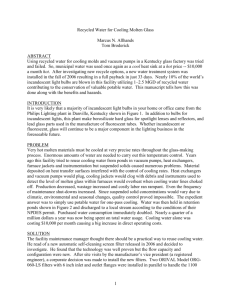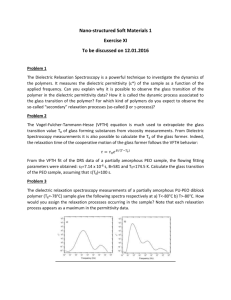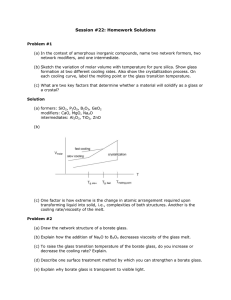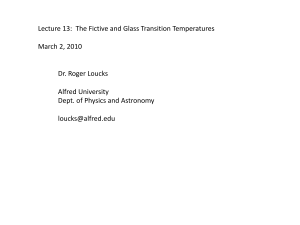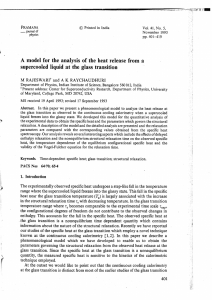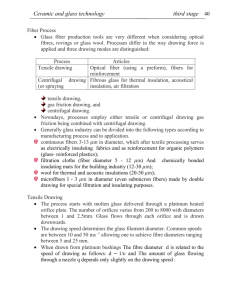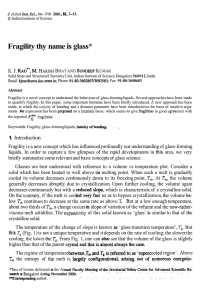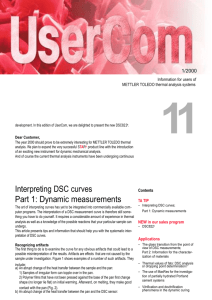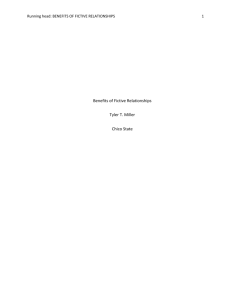Results of fictive temperatures obtained from differential scanning
advertisement
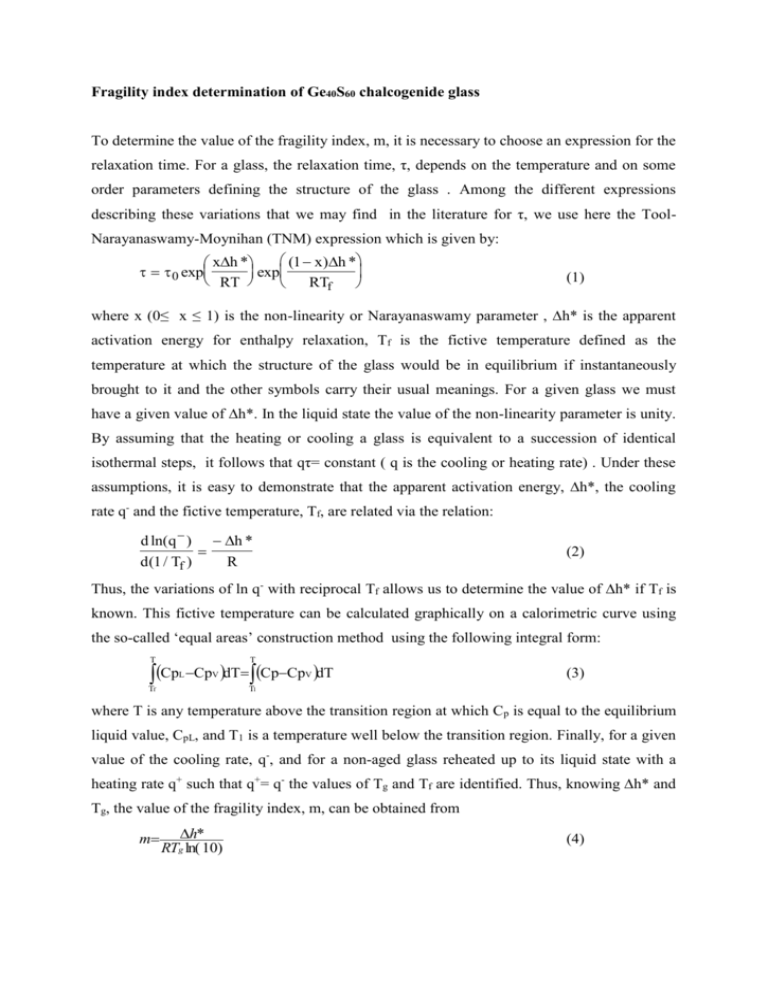
Fragility index determination of Ge40S60 chalcogenide glass To determine the value of the fragility index, m, it is necessary to choose an expression for the relaxation time. For a glass, the relaxation time, τ, depends on the temperature and on some order parameters defining the structure of the glass . Among the different expressions describing these variations that we may find in the literature for τ, we use here the ToolNarayanaswamy-Moynihan (TNM) expression which is given by: (1 x)h * xh * 0 exp exp RT RTf (1) where x (0≤ x ≤ 1) is the non-linearity or Narayanaswamy parameter , ∆h* is the apparent activation energy for enthalpy relaxation, Tf is the fictive temperature defined as the temperature at which the structure of the glass would be in equilibrium if instantaneously brought to it and the other symbols carry their usual meanings. For a given glass we must have a given value of ∆h*. In the liquid state the value of the non-linearity parameter is unity. By assuming that the heating or cooling a glass is equivalent to a succession of identical isothermal steps, it follows that qτ= constant ( q is the cooling or heating rate) . Under these assumptions, it is easy to demonstrate that the apparent activation energy, ∆h*, the cooling rate q- and the fictive temperature, Tf, are related via the relation: d ln(q ) h * d (1 / Tf ) R (2) Thus, the variations of ln q- with reciprocal Tf allows us to determine the value of ∆h* if Tf is known. This fictive temperature can be calculated graphically on a calorimetric curve using the so-called ‘equal areas’ construction method using the following integral form: T T Tf T1 CpL CpV dT CpCpV dT (3) where T is any temperature above the transition region at which Cp is equal to the equilibrium liquid value, CpL, and T1 is a temperature well below the transition region. Finally, for a given value of the cooling rate, q-, and for a non-aged glass reheated up to its liquid state with a heating rate q+ such that q+= q- the values of Tg and Tf are identified. Thus, knowing ∆h* and Tg, the value of the fragility index, m, can be obtained from m h* RTg ln( 10) (4) The Ge40S60 sample is prepared from a mixture of high purity (99.999 %) Ge and S according to the melt-quench technique. Variations of the heat capacity changes at Tg are measured by differential scanning calorimetry using DSC 2920 ( modulated TA instrument) calorimeter run in the conventional mode. To obtain good reproducibility, the same sample sealed in an aluminium pan is used during all measurements. To determine ∆h*, cooling experiments are performed. From the rejuvenation temperature, Tr, about 10 K above Tg, the sample is cooled down at the cooling rates of 100, 50, 20, 10, 5, 1 K/min. Then they are immediately reheated at q+ =10 K/min up to Tr. To erase any aging effects in experiments, the sample is kept for 3 min. at Tr before any cooling run. The calorimeter is calibrated in temperature and enthalpy of melting of pure indium. A small lump of glass (18.25 mg) is sealed in aluminium pan and referenced to an empty one. The results of this measurement will be the subject of a coming article.

